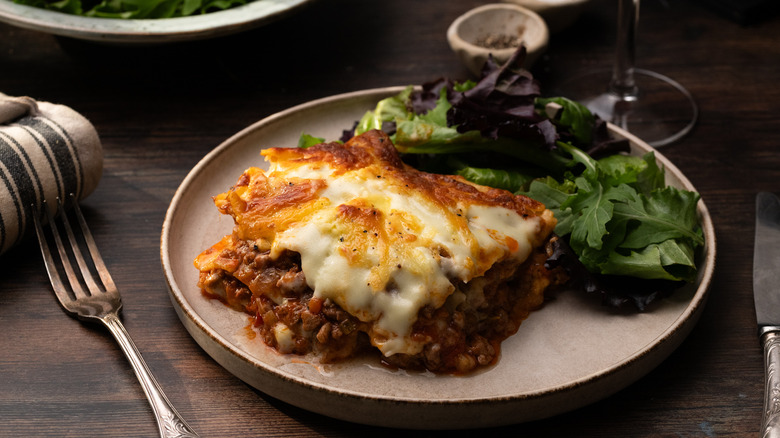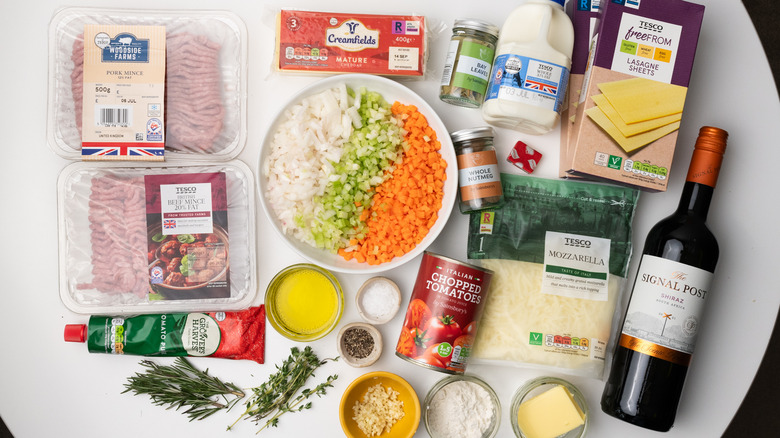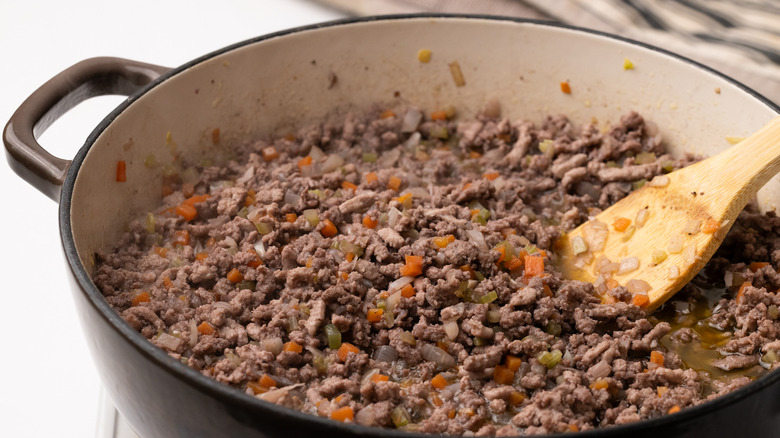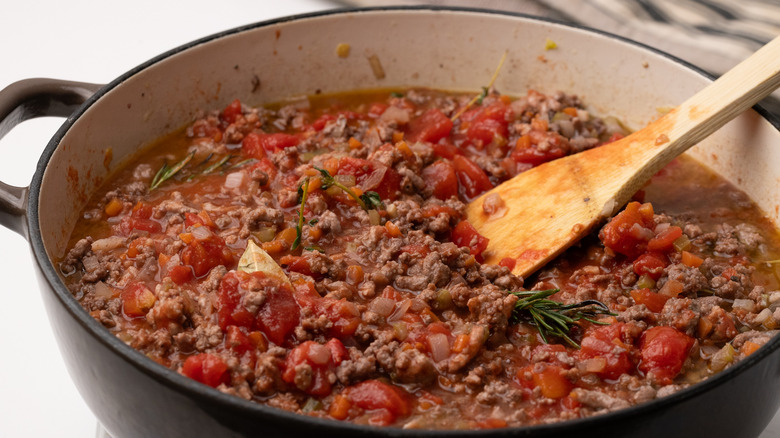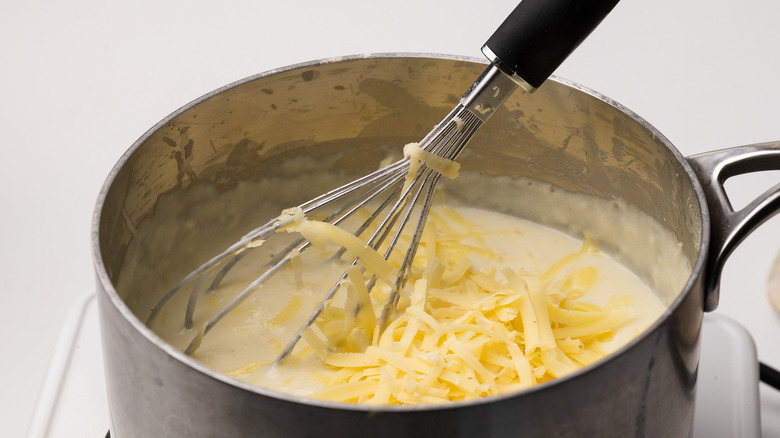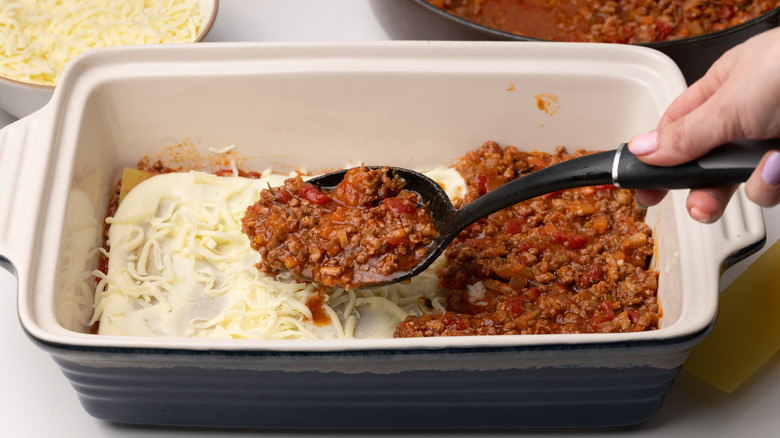Classic Gluten-Free Lasagna Recipe
When thinking about gluten-free food, Italian cuisine seems like it would be a complete no-go. After all, pasta and pizza are traditionally not safe options for anyone on a gluten-free diet. However, thanks to many great food developers and dedicated companies, there are more gluten-free products available every year. These days, making gluten-free Italian dishes is easier than it looks, so those of us who need to live without gluten no longer have to go through the heartbreak of passing on Italian food.
Lasagna is a go-to Italian comfort food, and it is a dish that will likely be found on the menu of any Italian restaurant. There are hundreds of recipes for this much-loved meal, but if you are looking for a really classic gluten-free lasagna recipe, we encourage you to try this one, created by recipe developer Jennine Rye.
Having lived on a gluten-free diet for 17 years, Rye knows how to work with gluten-free ingredients to make dishes so tasty that you won't believe they are gluten-free. Gone are the days of subpar options for those with dietary requirements; this delicious and comforting recipe will satisfy everyone around the table.
Gather the ingredients for this classic gluten-free lasagna recipe
To make this classic gluten-free lasagna recipe, first you will need to gather your ingredients. To make the ragù sauce you will require an onion, a carrot, celery, garlic, ground beef, ground pork, red wine, rosemary, thyme, bay leaves, chopped tomatoes, tomato purée, and beef stock. You will additionally want cooking oil, and salt and pepper. To make the béchamel sauce you will need butter, gluten-free flour, whole milk, cheddar cheese, and nutmeg. Additionally, you will want gluten-free lasagna sheets and grated mozzarella.
If you are unable to source gluten-free lasagna sheets, these can be replaced by slices of courgette or aubergine, or even layers of other gluten-free pasta.
Start the ragù
To create the meat mixture for your lasagna, start by frying onion, carrot, and celery in a large, heavy-bottomed pan. This mixture of vegetables is also known as a soffritto and is an important flavor base for many Italian dishes. When the vegetables are soft, add the garlic, and then the ground pork and beef. Season everything well and then fry the meat until browned. Add red wine and let everything cook for a few minutes, absorbing the rich flavors of the alcohol then add the tomato purée, chopped tomatoes, fresh herbs, bay leaves, and the beef stock.
Leave the ragù to simmer
When making an Italian ragù mixture, leaving it to simmer is possibly the most important step. Once the final liquids and herbs are added, give everything a good stir, and then turn down the heat so that the pan is gently simmering. Then it is time to walk away. Having patience and letting time do its job will result in a wonderfully tender and flavorful final dish; it'll be worth the wait, we promise!
Make the béchamel sauce
No lasagna would be complete without béchamel sauce as the cheesy creamy sauce pairs perfectly with the rich meaty ragù. We prefer our béchamel flavored with lots of sharp cheddar cheese and a grating of fresh nutmeg. To make the béchamel sauce, melt butter in a pan and then whisk in gluten-free flour to form a roux. Slowly add milk in increments to create a thick smooth paste, and then add in the cheese and nutmeg. Keep whisking until everything is combined and then turn off the heat.
Layer up the lasagna
To assemble your lasagna, always start with a layer of meat so the lasagna doesn't stick to the bottom of the dish. Cover the ragù layer with a layer of pasta sheets, you can always snap these into smaller pieces to fill in empty spaces, and then add a spoonful or two of the béchamel sauce and a sprinkling of mozzarella cheese. Repeat this process – ragù, pasta sheets, béchamel sauce, and cheese — until all of the ragù has been used up. Then pour the rest of the béchamel sauce on top, and top everything off with any remaining cheddar cheese and mozzarella.
Bake the lasagna
To bake the lasagna to perfection, place it uncovered in the center of a preheated oven and let the heat do the hard work for you. To test whether the lasagna is ready, gently push a knife through the layers to see whether the pasta sheets are soft. The dish is ready when a knife easily slides through the lasagna and the top is deliciously golden.
Remove the lasagna from the oven and serve it hot with a side of fresh salad. Any leftovers can be stored in an airtight container in the fridge and should be consumed within three days.
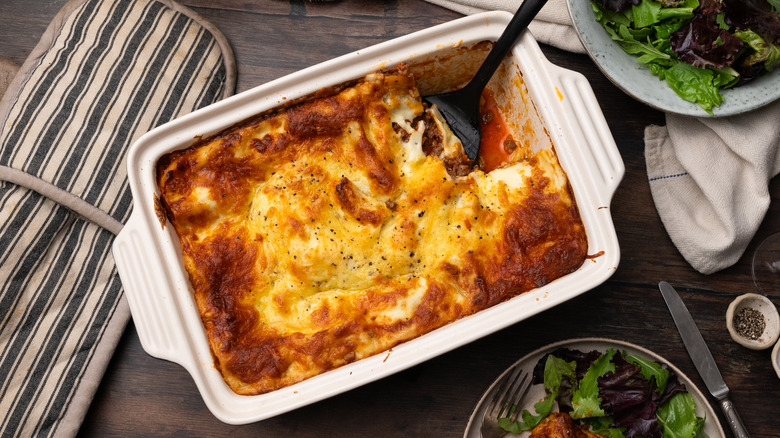
- 2 tablespoons cooking oil
- 1 large onion, finely chopped
- 1 large carrot, finely chopped
- 2 stalks celery, finely chopped
- 2 cloves garlic, finely chopped
- 1 pound ground beef
- 1 pound ground pork
- 1 cup red wine
- 2 sprigs fresh rosemary
- 8 springs fresh thyme
- 2 bay leaves
- 2 14-ounce cans chopped tomatoes
- 1 tablespoon tomato purée
- 1 cup beef stock
- 1 tablespoon butter
- 1 tablespoon gluten-free flour
- 2 cups whole milk
- 3 cups grated cheddar, divided
- Pinch of nutmeg
- 14 gluten-free lasagne sheets
- 1 cup grated mozzarella
- Heat up the cooking oil in a large, heavy-bottomed pan to a medium heat. Add the finely chopped onions, carrots, and celery to the pan and sauté for 5–10 minutes until soft. Add the garlic and cook for a few more minutes until the garlic is fragrant.
- Add the ground beef and ground pork to the pan, season well with the salt and pepper, and then fry along with the vegetables until the meat is browned.
- Add the red wine to the pan and allow the ground meat and vegetable mixture to cook in it for 5 minutes, before adding the fresh rosemary and thyme, bay leaves, chopped tomatoes, tomato purée, and beef stock. Mix everything together and then allow to simmer for 45 minutes, stirring occasionally.
- To make the béchamel sauce, heat up a medium-sized saucepan to a medium heat and then add the butter. Once it has melted and is starting to gently sizzle, add the flour and whisk quickly with a balloon whisk to form a paste.
- Add the milk to the pan in increments, whisking the mixture all the while, until a thick smooth sauce has formed.
- Continuing to whisk the mixture, add 1½ cups of grated cheddar cheese to the sauce, along with a pinch of nutmeg, and continue to whisk until the cheese is fully incorporated, then remove from the heat.
- To assemble the lasagna, preheat the oven to 350 F. In a large, deep-bottomed ovenproof dish, start by spooning the ragù mixture into the base of the dish until it is just covered.
- Place a layer of lasagna sheets on top of the ragù, making sure most of the layer is covered. Then, add a small spoonful of the béchamel sauce and spread it out, topping with a small sprinkling of mozzarella. Repeat this layering process until all of the ragù mixture is used up.
- Finish off the lasagna by covering the top with a thicker layer of the béchamel sauce, and then topping with the remaining cheddar cheese and mozzarella.
- Place the lasagna in the oven for 1 hour to cook through. Test by gently poking a knife into the lasagna to check how soft the pasta sheets are. The lasagna will be ready when a knife easily sinks through the lasagna, and the top is beautifully golden and crisp in areas. Serve hot.
